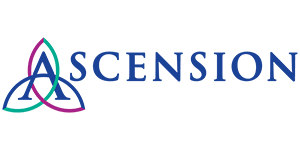What is Autism?
Autism spectrum disorder (ASD) is a developmental disability that is caused by differences in the brain. Children with ASD behave, learn, interact and communicate differently than other children and they have a very wide range of skills and abilities. Some children with ASD are nonverbal and need a lot of help, while others can communicate and function independently.
A parent may notice ASD symptoms within the first 12 months of a child’s life, but some children aren’t diagnosed until they are much older. The symptoms can be subtle and aren’t the same in every child. Some children gain new skills and meet developmental milestones and then stop gaining skills and begin to struggle.
Children with ASD may have trouble understanding what behaviors are expected of them, struggle with communication, and have unusual repetitive behaviors.
Some signs and symptoms to look out for:
![]()
Social & Interaction Skills:
- Avoiding or not maintaining eye contact
- Unresponsive to name by 9 months of age
- No facial expressions by 9 months of age
- Not express interest by pointing by 18 months of age
- Unaware when others are hurt or upset by 24 months of age
- Doesn’t play with other children by 36 months of age
- No pretend play by 48 months of age
Restricted or Repetitive Behaviors
- Likes to line up toys or other objects and gets irritated when the order is changed
- Repeats words or phrases
- Plays with toys in the same way, every time
- Becomes focused on only one part of an object
- Dislikes minor changes
- Has obsessive interests
- Insists on following certain routines
- Flaps hands, rocks body, or spins self in circles
- Has unusual reactions to the way things sound, smell, taste, look, or feel
Other Characteristics
- Delayed language, movement, or cognitive skills
- Hyperactive, impulsive, and/or inattentive behavior
- Epilepsy or seizure disorder
- Unusual eating and sleeping habits
- Gastrointestinal issues
- Unusual mood or emotional reactions
- Anxiety, stress, or excessive worry
- Lack of fear or more fear than expected
Early Intervention & Treatment
Treatment for ASD focuses on reducing the behaviors that affect quality of life and obstruct daily living. Each child is impacted by ASD in a unique way and therefore requires personalized treatment. ABA is a behavioral approach to helping a child with ASD and has proven evidence for treating the symptoms of ASD, is widely accepted, and used in many schools and clinics. Early diagnosis and treatment enables children to have more potential for learning, change, and progress. ABA therapy encourages desired behaviors and discourages undesired behaviors to help children function independently, gain skills, and enjoy a better quality of life.
Diagnosis


Your child is more than a diagnosis.
Begin the journey today!
The sooner you reach out, the
sooner you will see results.
"*" indicates required fields
100+ Insurance plans accepted.
If you don't see your insurance, give us a call, we can help!







